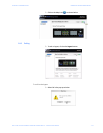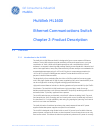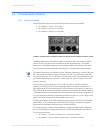
MULTILINK ML1600 ETHERNET COMMUNICATIONS SWITCH – INSTRUCTION MANUAL 2–1
Multilink ML1600
Ethernet Communications Switch
Chapter 2: Product Description
GE Consumer & Industrial
Multilin
Product Description
2.1 Overview
2.1.1 Introduction to the ML1600
The MultiLink ML1600 Ethernet Switch is designed to focus on two aspects of Ethernet
markets. The ML1600 switches provide modularity of fiber and copper ports, a mix and
combination of 10Mb, 100Mb and Gigabit speed ports, with comprehensive MGMNT
software in a compact industrial-grade package. Setting a new standard for industrial and
carrier class applications, heavy duty Ethernet switch jobs are readily accommodated with
an e xt end ed tem pe ra ture r at in g o f – 40 °C to 4 0° C b y t he U L c om po ne nt pa r ts me th od , o r
-40°C to 85°C by the IEC 60068 type test method. The hardened ML1600 is a “multi-
purpose” industrial Ethernet switch.
The large family of port modules offer the choice of all fiber media (all connector types,
multi- and single-mode) and 10/100 Mb auto-negotiating RJ45 ports. Standard GBIC ports
can be configured for a variety of Gigabit cabling types and distances.
High performance features include non-blocking speed on all ports and 802.1p QoS Traffic
Prioritization. The MultiLink ML1600 switches are “plug-and-play” ready for use as
backbone switches where a mix of bursty data traffic and priority streaming traffic for VoIP
and audio/video “Triple Play” applications are present.
The ML1600 switches are provided with LAN MGMNT software including SNMP, Tag- and
Port-based VLANs, IGMP Snooping and Port Security with control via Web and command
line interface (CLI). For high availability LANs using ring topologies, Spanning Tree Protocol
and Link-Loss-Learn are available.
The MultiLink series of switches have heavy duty metal cases and internal DC power
supplies. Redundant power supplies are optional on all models.
The ML1600 is designed using diodes inside on each DC power input line behind the two
external power connection terminals, so that the power from an external source can only
flow into the switch. This allows the switch to operate only whenever DC power is correctly


















